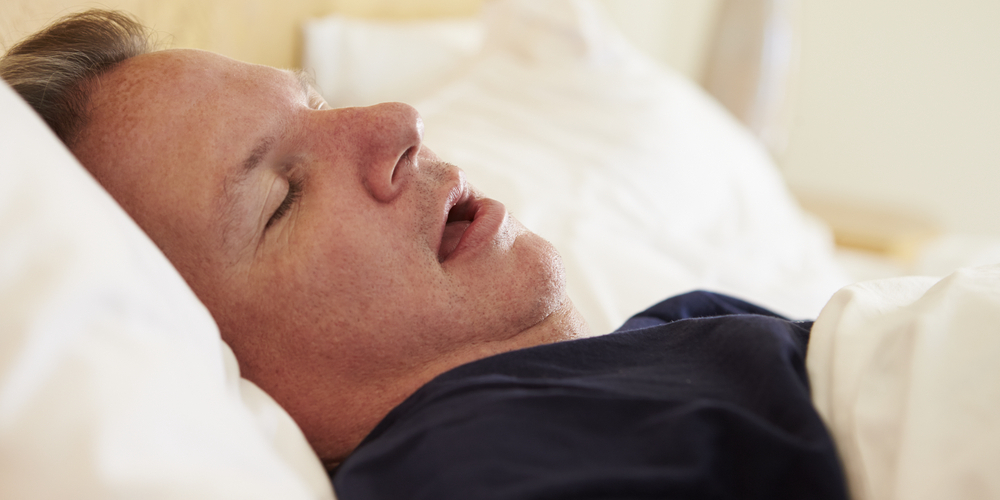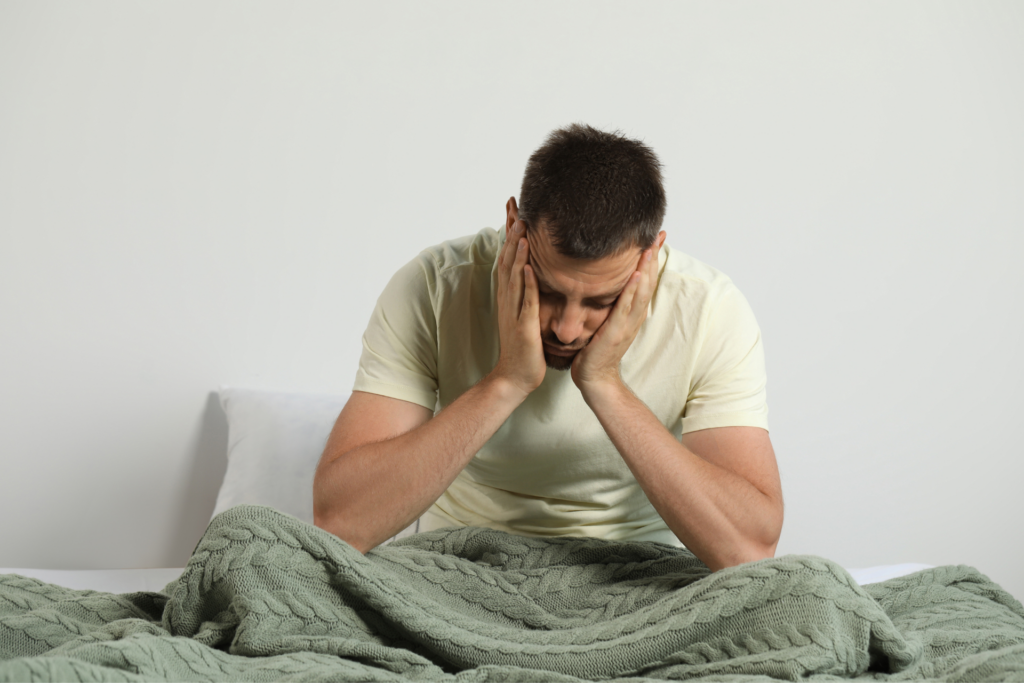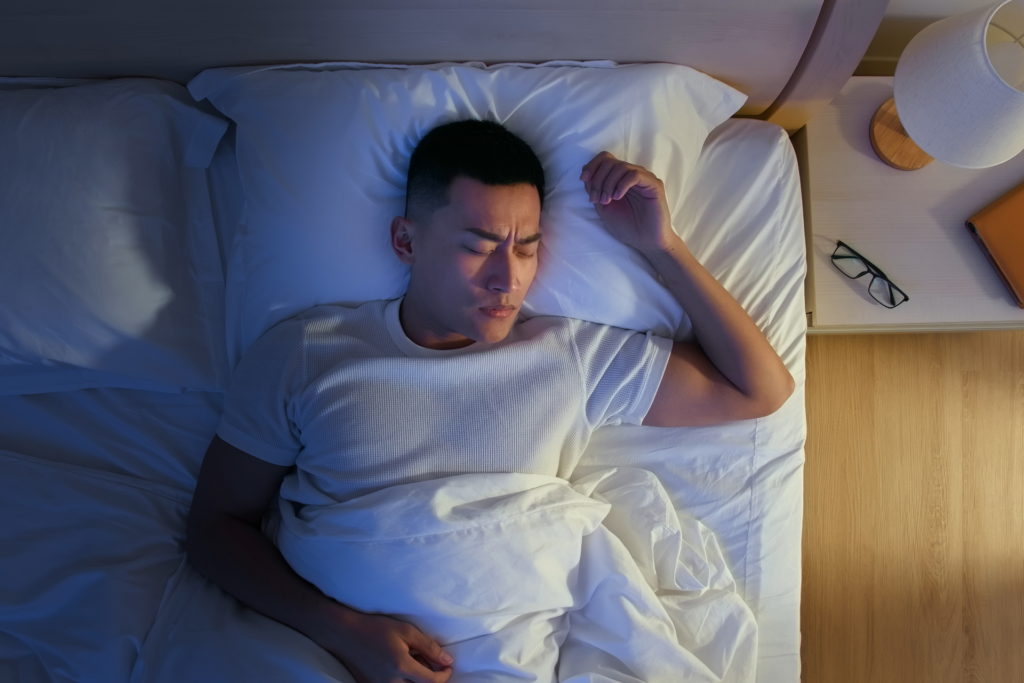How well do you sleep at night?
Sleep is a vital process that impacts you on a physical and emotional level— whether you get too much or too little, you depend on sleep to help keep yourself healthy and sane. However, some people may struggle to get the restful sleep they need each night, and they may not know why.
Most likely, this is because they are suffering from undiagnosed sleep apnea. But you may be wondering— what is sleep apnea, how do you know if you have it, and how do you treat it? Let’s take a look.
What Is Sleep Apnea?
Sleep apnea is a sleep disorder defined as a complete collapse of the upper airway during sleep, causing pauses or brief stops in breathing. In turn, this causes a reduced oxygen level in your body, creating or worsening sleep and health complications.
When the muscles around the neck relax during sleep, it puts pressure on your airway, causing it to collapse. As it partially collapses, the air moving in and out of the airway causes a vibration noise— otherwise known as snoring. Snoring is the most common symptom of sleep apnea and the easiest to identify.
People with mild sleep apnea may stop breathing as many as 15 times per hour, while people with severe sleep apnea may stop breathing more than 31 times per hour.
Sleep apnea is most common in middle-aged and older adults, especially in men. However, it’s common for children to experience sleep apnea periodically as they grow as well, though this is usually temporary.
Types of Sleep Apnea
Sleep apnea isn’t just a single disorder— there are actually three main types of sleep apnea:
- Central Sleep Apnea: Central sleep apnea occurs when your brain does not properly signal your respiratory muscles, causing breathing pauses.
- Obstructive Sleep Apnea (OSA): The most common form of sleep apnea. OSA occurs when physical obstructions in your airway cause pauses in breathing.
- Complex Sleep Apnea: The least common form of sleep apnea. Complex sleep apnea occurs when you have central sleep apnea and OSA at the same time.
The Difference Between Sleep Apnea and Hypopnea
As the airway further collapses, oxygen levels begin to drop. Hypopneas occur during periods of partial obstruction, where breathing is shallow but still present. Apnea occurs when the airway has a complete collapse, and airflow ceases completely for a few seconds. In fact, because of how similar the two are, most people who are diagnosed with sleep apnea actually have hypopneas.
However, any airway obstruction or collapse is cause for concern and should not be ignored if you are aware that you have them. It’s not always easy to tell if you’re experiencing sleep apnea though— that’s why it’s so important to be aware of the disorder’s symptoms.
Common Sleep Apnea Symptoms
Some sleep apnea symptoms are more obvious than others. In fact, some of these symptoms are more often detected by a person’s sleep partner rather than the sleep apnea patient themself. Some of these symptoms include:
- Excessive daytime sleepiness or fatigue during the day, even if you had a full night’s sleep
- You suffer from anxiety or depression
- Loud snoring that can be heard even from other rooms in the house
- You wake up with a dry mouth or a sore throat
- Multiple apnea episodes per night, where breathing pauses 5-31+ times per hour
Related: 5 Important Signs You Need a Sleep Test
Sleep Apnea Risk Factors
We mentioned above that older men were most likely to have sleep apnea, but there are actually many risk factors for sleep apnea. Let’s take a look at the most common of these.
1. Weight
Obesity and being overweight can cause sleep apnea, and that extra weight can also exacerbate your symptoms. However, a common misconception is that sleep apnea is a disorder caused by obesity, and this is simply not true.
Let’s be clear. While weight certainly plays a role in sleep apnea, it’s not the defining factor.
2. Genetics
Anatomic narrowing of the airway is the biggest risk factor for sleep apnea. This can occur due to enlarged tonsils or an enlarged tongue, a small or recessed chin, a thick neck, as well as other characteristics. These characteristics are generally inherited, so there is a significant genetic component to sleep apnea.
If you have a family history of sleep apnea, that makes you more likely to develop the disorder as well.
3. Gender
Men are generally at a higher risk of sleep apnea than women— however, a woman’s risk of sleep apnea increases as she reaches menopause.
This is because of hormonal changes that women experience throughout their lives, beginning at puberty, during pregnancy, and around menopause. Decreased estrogen levels during menopause can reduce the firmness of a woman’s throat muscles, making her more likely to develop sleep apnea. [1]
4. Age
Age is a key factor for developing sleep apnea. As you age, the muscle tone throughout your body weakens, making you more susceptible to developing the disorder.
However, as we wrote earlier, young children may still have sleep apnea based on other factors, including— interestingly enough— attention deficit hyperactivity disorder (ADHD).
Related: How Sleep Disorders in Children Can Create Future Health Problems
How To Diagnose Sleep Apnea
In order to make a diagnosis of sleep apnea, it’s necessary to complete a sleep study— or polysomnography. This is generally done in an accredited sleep center, like the Sleep Centers of Middle Tennessee. You’d come in in the evening, and the test is performed during your normal bedtime. Electrodes are attached to you to monitor life signs like brain waves, heart rate, heart rhythm, and blood oxygenation.
Once those are in place, you can sleep normally as the test begins. After waking up normally in the morning, the test concludes, and you’re allowed to leave after your sleep specialist removes the electrodes.
If you’re unable to leave your home for a sleep study, advancements in technology now allow a more convenient way to complete a sleep test from the comfort of your own home. For more information, check out our article about how to complete a sleep study at home.
How to Treat Sleep Apnea
Sleep apnea will not clear up on its own, so appropriate sleep apnea treatment is vital to address the disorder and reduce your symptoms.
One of the best ways to treat sleep apnea is with CPAP. CPAP— or continuous positive airway pressure— keeps your airways open. CPAP therapy is the most popular and effective sleep apnea treatment, and we recommend this treatment option for sleep apnea patients.
Another treatment option for sleep apnea is oral appliance therapy— these appliances are used to prevent your airway from becoming obstructed by your tongue or your lower jaw. Some of these appliances look similar to mouthguards, like the ones used in sports or to prevent you from grinding your teeth. Surgical options are also available if necessary.
Regardless of how you treat your sleep apnea, it’s simply important that you do. Untreated sleep apnea can take a serious toll on your health and is associated with other health risks including high blood pressure, heart failure or heart attack, diabetes, and even erectile dysfunction.
As long as you stick to your treatment, you’ll begin to feel rested and rejuvenated again after each night’s sleep. If you experience any other health conditions like some of those listed above, you may actually experience a reduction in those symptoms as well. Along with your recommended treatment, there are other ways to help reduce the severity of your sleep apnea symptoms.
Healthy Lifestyle Changes that Help Sleep Apnea Symptoms
A healthy lifestyle can help prevent or even reverse a lot of serious health problems— sleep apnea included. If you want to reduce your risk for the disorder or address your symptoms, consider making these easy lifestyle changes:
- Lose Weight: If you are overweight or obese, losing weight is one of the best ways to help treat your sleep apnea. If you’re obese, even 10 to 15 percent weight loss can reduce OSA severity by 50 percent! This is because the excess weight in your neck can block your airway and put additional pressure on your throat and lungs. Removing that weight relieves the extra pressure on your airway, helping you to breathe easier.
- Exercise: Regular moderate exercise is vital to good health and healthy sleep. A study from the Harvard Medical School found that increased physical activity decreases your risk of sleep apnea while living a sedentary lifestyle raises your risk significantly. [2]
- Don’t smoke: Cigarette smoke and nicotine can inflame your airways, contributing to obstruction. You can reduce and eventually remove this inflammation if you quit smoking.
- Avoid alcohol and certain medications: Alcohol, as well as certain medications including Xanax, Ativan, Valium, and Klonopin, can relax the muscles in your throat and interfere with your breathing at night.
- Sleep on your side: Sleeping on your back can cause your tongue to fall back into your throat and block your airway. Sleeping on your side can help you keep your airways open and sleep better.
Related: What Makes Sleep Apnea Worse? 8 Things to Watch Out For
Get A Better Night’s Sleep— Get Tested for Sleep Apnea
A good night’s sleep is vital to good health, but it’s not always easy to tell if you have a sleep disorder ruining your ability to get healthy sleep.
If you think you may have obstructive sleep apnea, sleep-disordered breathing, or are at risk for them, it’s vital to contact a medical professional like your doctor or a sleep specialist for an evaluation. Following the evaluation, they can help you get started on the right treatment option for your health needs.
You shouldn’t have to worry about your breathing while you sleep. Contact us at the Sleep Centers of Middle Tennessee today to get back to the restful, healthy sleep you deserve.
References
- Pulmonary, Division of. “Sleep in Women across the Stages of Life: Clinical Pulmonary Medicine.” LWW, journals.lww.com/clinpulm/abstract/2018/05000/sleep_in_women_across_the_stages_of_life.3.aspx.
- Want to Avoid Sleep Apnea? Get off the Sofa | Health News … www.usnews.com/news/health-news/articles/2021-07-22/want-to-avoid-sleep-apnea-get-off-the-sofa.




